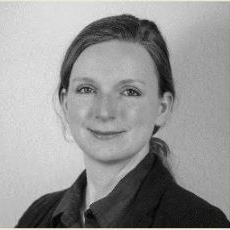Outdoor Thermal Comfort in Cities: Assessing and Developing Green, Blue and Grey Solutions for Healthy and Sustainable Urban Future
A special issue of Atmosphere (ISSN 2073-4433). This special issue belongs to the section "Biometeorology".
Deadline for manuscript submissions: closed (18 November 2021) | Viewed by 24696
Special Issue Editors
Interests: outdoor thermal comfort; human biometeorology; urban climate; climate-sensitive urban design; nature-based solutions
Interests: climate-sensitive planning; urban climate; human biometeorology; heat stress; urban green; multi-scale analyses
Office of Core Curriculum, Singapore Management University, Administration Building, Level 9, 81 Victoria Street, 188065, Singapore
Interests: outdoor thermal comfort; heat perception; physiology of heat regulation; urban climate; nature-based solutions
Special Issue Information
Dear Colleagues,
We invite you to contribute original research and review articles dealing with outdoor thermal comfort, urban climate, and urban design solutions (grey/green/blue) for healthy and sustainable neighborhoods and cities. Your contributions can include field studies, biometeorological surveys, experimental and modeling works, as well as techniques and developments tailored to the assessment of outdoor thermal comfort and urban climate conditions. The manuscripts can include studies focused on developing climate-sensitive urban design solutions and guidelines at various scales. Research centered on nature-based solutions to mitigate the adverse impacts of urbanization processes and climate change in cities are also welcome. Moreover, studies that target the interactions between urban climate, outdoor thermal comfort, and related fields such as climate change mitigation and air quality are appropriate to be included in the Special Issue. Finally, review articles that summarize past and contemporary research and provide valuable insights and future research directions in the study of outdoor thermal comfort, urban climate, and climate-sensitive urban design are also invited.
Topics of interest include, but are not limited to the following:
- Outdoor human thermal comfort conditions in diverse urban environments: field studies, modeling, and surveying
- Urban climate conditions (e.g., UHI, humidity, wind, radiation)
- Climate-sensitive and nature-based solutions for healthy and sustainable neighborhoods and cities
- Interactions between outdoor thermal comfort measures and related fields such as climate change mitigation and air quality
- Heat and health in cities
- Climate change and urbanization
Dr. Dragan Milosevic
Dr. Britta Jänicke
Dr. Yuliya Dzyuban
Dr. Michael Allen
Guest Editors
Manuscript Submission Information
Manuscripts should be submitted online at www.mdpi.com by registering and logging in to this website. Once you are registered, click here to go to the submission form. Manuscripts can be submitted until the deadline. All submissions that pass pre-check are peer-reviewed. Accepted papers will be published continuously in the journal (as soon as accepted) and will be listed together on the special issue website. Research articles, review articles as well as short communications are invited. For planned papers, a title and short abstract (about 100 words) can be sent to the Editorial Office for announcement on this website.
Submitted manuscripts should not have been published previously, nor be under consideration for publication elsewhere (except conference proceedings papers). All manuscripts are thoroughly refereed through a single-blind peer-review process. A guide for authors and other relevant information for submission of manuscripts is available on the Instructions for Authors page. Atmosphere is an international peer-reviewed open access monthly journal published by MDPI.
Please visit the Instructions for Authors page before submitting a manuscript. The Article Processing Charge (APC) for publication in this open access journal is 2400 CHF (Swiss Francs). Submitted papers should be well formatted and use good English. Authors may use MDPI's English editing service prior to publication or during author revisions.
Keywords
- Outdoor thermal comfort
- Human biometeorology
- Urban heat island
- Urban climate
- Climate-sensitive urban planning and design
- Nature-based solutions








